I’ve always had a great interest in antique manuscripts and early printed books and, in particular, the elaborate covers and metal hardware associated with them. Several months ago I began work on a short series of jewelry pieces that were based on the forms and functions of metal hardware often used in large manuscripts and books. Before offering images of my pieces, I thought it might be of interest to readers to see how some of the original hardware looked and functioned.
The next four images are good examples of Late Medieval to Post-Medieval manuscripts and printed books utilizing metal hardware. In the first image, immediately below, note how a brass chain is affixed internally beneath the manuscript’s leather cover, to a title plate, and how brass strap ends snap into brass openings to keep the manuscript closed. The hand written manuscript shown is in the Schoyen Collection and dates to the early 1400s.
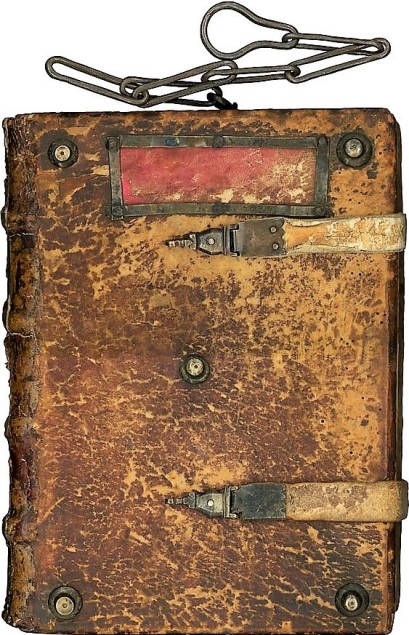
In the next image, small, decorative hinged brass plates are affixed with rivets to the board over which leather has been stretched, stamped and tooled to form the book’s cover. The hinges can be seen here and the additional components of this hardware continue around to the other side of the volume. There, they either snap or lock into place with additional hardware, keeping the book securely closed and pressed tight. This example is Alexander de Ales’ Summa universae theologiae, printed in Pavia and now in St Andrews University Library.

This impressive set of brass hardware serves several purposes. The elaborate corner pieces, decorated in cutout work, repousse and chasing, help protect the book’s cover from damage. On the right side of the volume are two clasp and hasp sets one of which is partially open, showing how the two parts fit together to keep the book tightly closed. This image and the cover image for this blog entry are from an Incunable printed in Strasbourg in 1495.
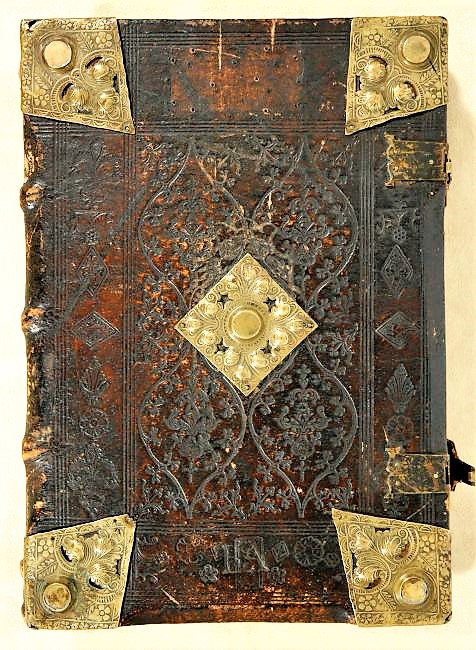
Lastly, the image below is of a comparatively modern book, a Dutch New Testament printed around 1660 in Leyden. Its excellent state of preservation helps display the form and function of the brass hardware very clearly. Elements include corner pieces, a central decorative boss and a pair of hinged clasp and hasp pieces; in this view the attachment plate for these and the hinge are visible. By applying pressure with the hand on the other side of the book cover, the clasp and hasp would separate and the book could then be opened manually.
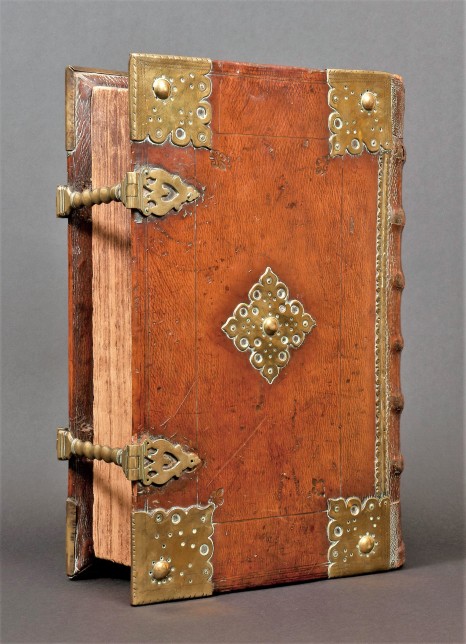
My own set of jewelry based on the type of hardware presented above includes examples of all these types but I’ll focus here on just three examples. In the first of these, immediately below, I’ve borrowed the form of a hinged plate that would have been attached to the leather covered boards of a Medieval to post Medieval book. The rivets used here no longer serve the function they would have on the original object, of attaching the metal to the leather and board, but are purely decorative. Parts of the surface have been textured and patinated to merely suggest age, rather then to try and imitate the effects of time. The etched surface decoration consists of a four-armed central boss with equal horizontal linear elements to either side, a swag beneath, and vertical linear elements below that. In and around these I’ve punched a small floral design ten times. The hinge components on the back allow a silver colored cord to pass through for wearing. The piece is large, 3.75 inches tall by 2.0 inches maximum width, and would make a bold statement when worn.
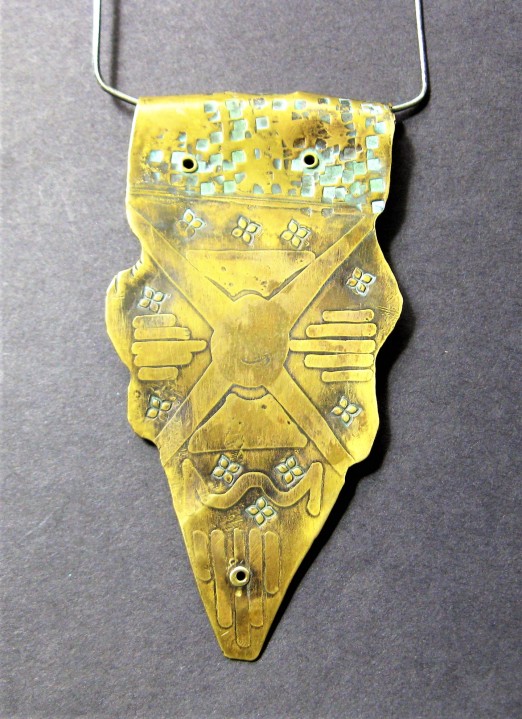
This pendant below is based on protective corner pieces from such Medieval to Post Medieval book covers. But instead of using the two rivets to attach the piece to the book cover, here the rivets allow the piece to be worn. The shape, including the miniature, reversed trilobate Gothic windows, was cut by hand using a jeweler’s saw, the copper rivets added and the punch mark decoration done with letter punches (letters O and X). The piece was also given a light layer of patination to suggest age. It is currently strung on a copper colored cord. It measures 2.50 inches in width by 1.25 inches in height.
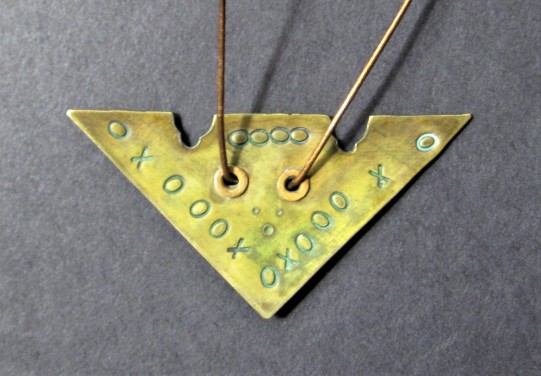
In this final example from the series, I’ve adapted the form of a plate clasp that would have received a hasp, holding a book closed or opening easily when pressure was applied to the book cover. It is decorated with simple acid etched designs, chasing and repousse (repousse is a French term for the technique of raising decoration on a heated and malleable metal surface by hammering or punching from behind). The overall surface of the piece has been left without patination, except for what little patina was created through applying heat to the metal surface. The clasp component visible on the back of the piece allows a faux leather cord to pass through for wearing. It measures 2.50 inches tall by 2.50 inches maximum width. Another large and rather bold piece of jewelry.
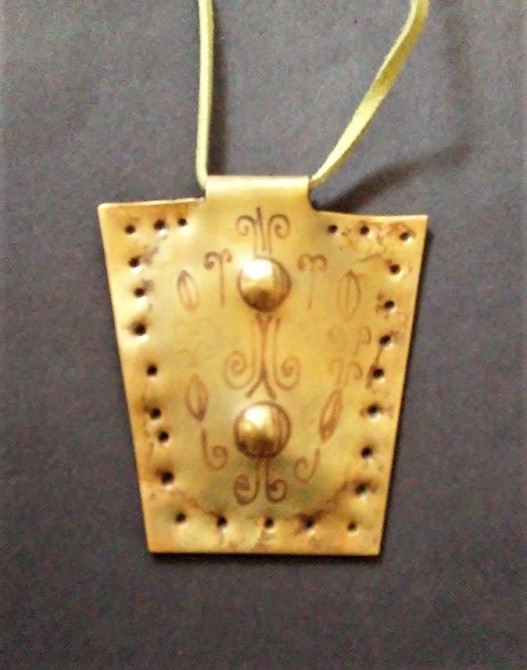
These examples, and many other types of jewelry, functional and decorative ceramics, works on paper and board, sculpture and more, are available in my Etsy shop: https://www.etsy.com/shop/PastPresentArtCraft

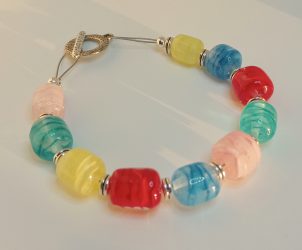
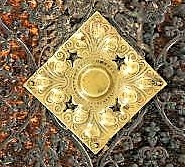

One Reply to “”